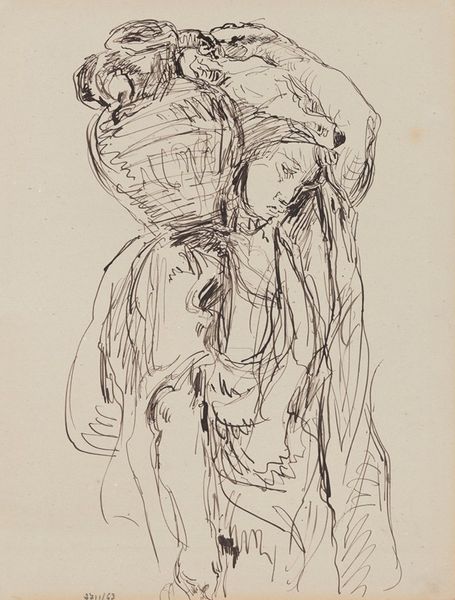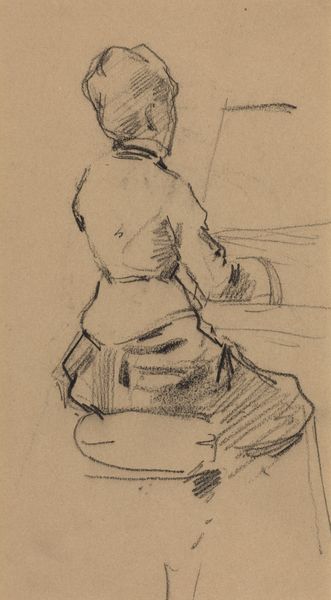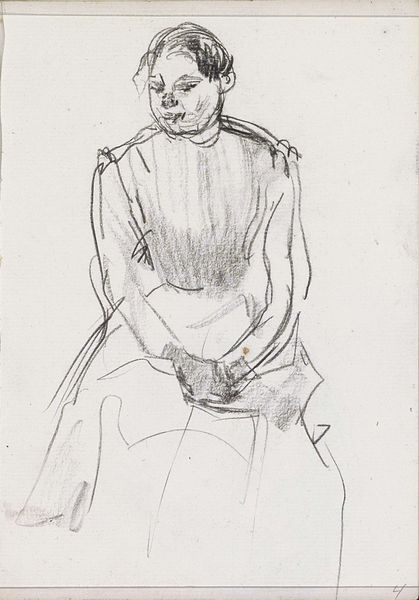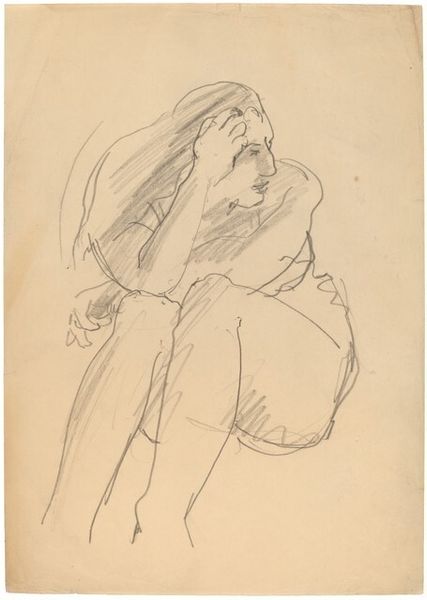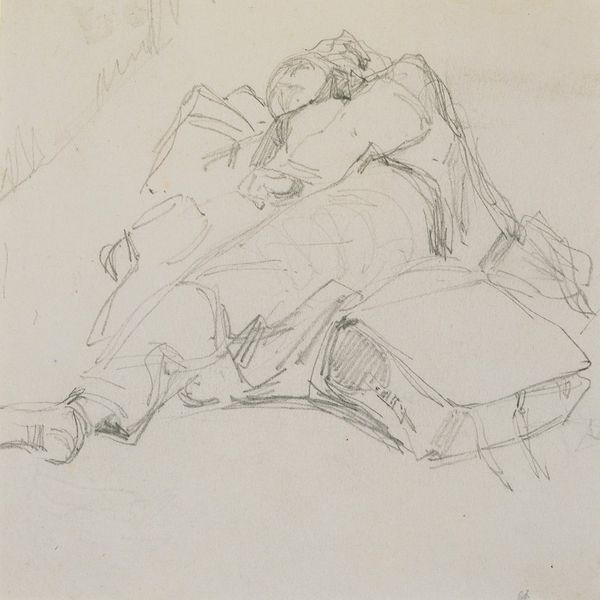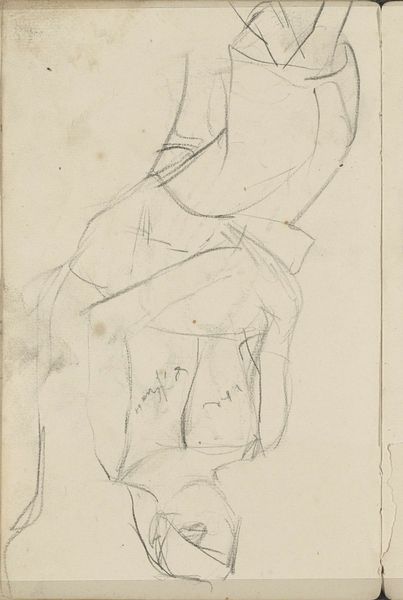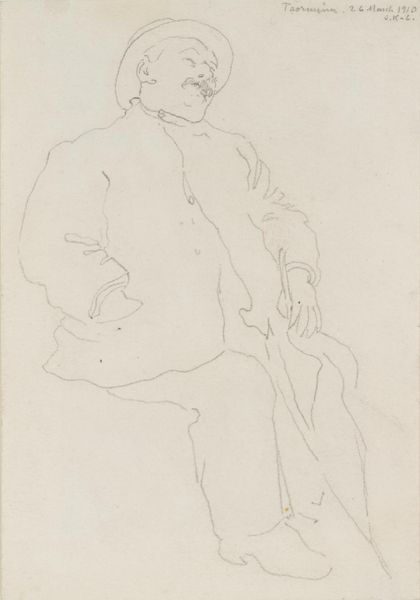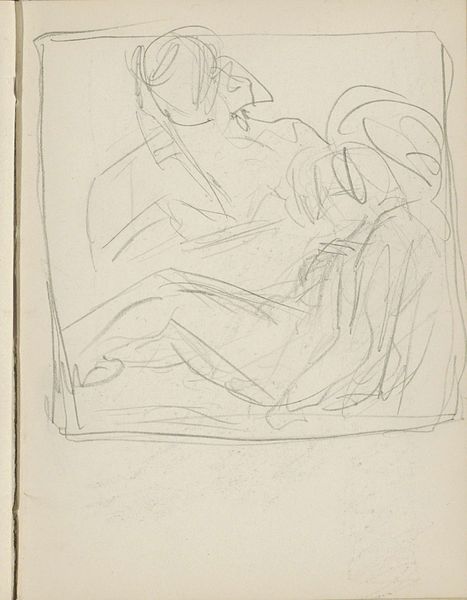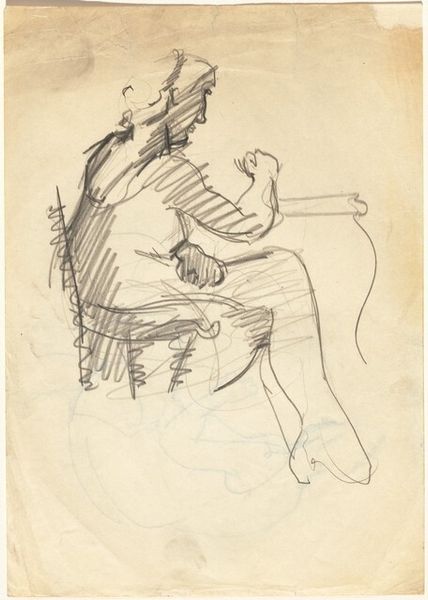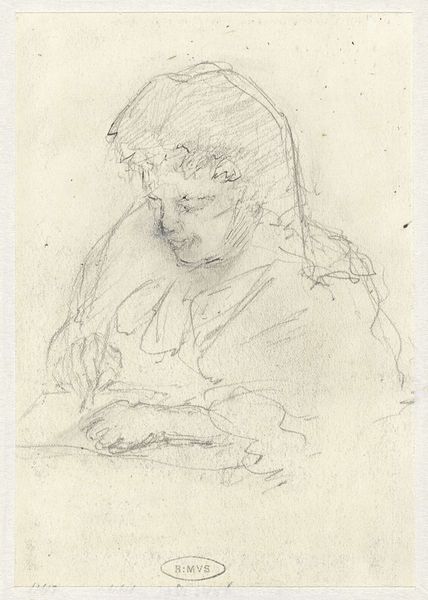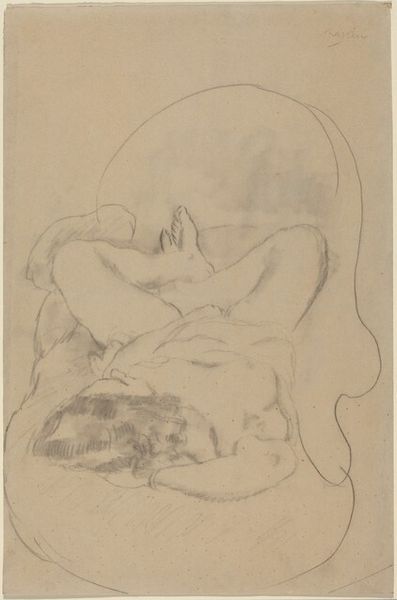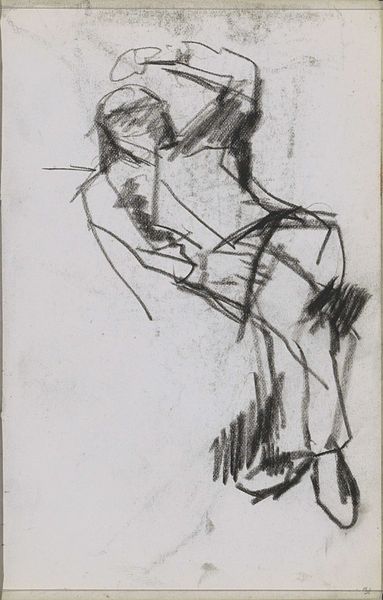
#
amateur sketch
#
light pencil work
#
mother
#
pencil sketch
#
incomplete sketchy
#
personal sketchbook
#
ink drawing experimentation
#
pen-ink sketch
#
sketchbook drawing
#
pencil work
#
initial sketch
Copyright: Rijks Museum: Open Domain
Curator: I’m immediately drawn to the tenderness evoked in this simple pencil sketch. There’s an almost ephemeral quality to it, like capturing a fleeting moment of maternal love. Editor: This is Jozef Israëls' "Moeder met een baby op schoot," dating somewhere between 1834 and 1911. What's so striking is its rawness; you see the artist's hand, the deliberate incompleteness. Curator: Yes, the unfinished nature invites speculation. I think we’re prompted to fill in the gaps, both visually and emotionally. What kind of world does this mother inhabit? What challenges does she face? The very ambiguity empowers us, the viewers. Editor: I agree, and considering the period Israëls was working in, the socio-political realities impacting women, especially mothers, would’ve been substantial. How does this work either conform to or deviate from societal expectations of motherhood? Where might she be located within the broader narratives of domestic labor and female autonomy, or lack thereof? Curator: I feel like the facelessness could be seen as a comment on the universal experience of motherhood, transcending individual identity to represent the collective burden and joy of raising a child, especially at the time, given all those additional burdens and limited options. Editor: That’s interesting. On the other hand, one could interpret the obscured face as reflecting the societal erasure of women's individual experiences and their reduction to the role of 'mother'. Were they not valued or deemed interesting as independent human beings? I do also wonder what place art, artists, and depictions of the laboring classes had in Dutch society in this period. What can a deeper investigation into the public role of art tell us about what was meant to be seen, by whom, and what was conveniently left unsaid? Curator: Ultimately, it’s this ambiguity, this invitation to interpret and to engage with the social implications of maternal representation, that makes this seemingly simple sketch so profound. Editor: Yes, this incomplete sketch offers much more than immediately meets the eye.
Comments
No comments
Be the first to comment and join the conversation on the ultimate creative platform.
